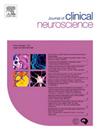Machine Learning-Based localization of the epileptogenic zone using High-Frequency oscillations from SEEG: A Real-World approach
IF 1.9
4区 医学
Q3 CLINICAL NEUROLOGY
引用次数: 0
Abstract
Introduction
Localizing the epileptogenic zone (EZ) using Stereo EEG (SEEG) is often challenging through manual analysis. Even methods based on signal analysis have limitations in identifying the EZ, particularly in patients with neocortical epilepsy.
Methods
We developed machine learning (ML) methods that utilize HFO from SEEG recordings to train models to localize the EZ. We used data from 52 epilepsy patients (37 seizure free and 15 non-seizure free) who had epilepsy surgeries at our centre and were followed up for an average of 27.4 months. A total of 27 features encompassing statistical, linear, and nonlinear parameters were computed for HFOs from EZ and non-EZ brain areas. Performances of different classification algorithms were compared.
Results
In cases of mesial temporal lobe epilepsy, we achieved a cross-validation accuracy of 85.4% with the Extra-Trees classifier, 85.3% with the Random-Forest, and 82.1% with the Voting-classifier, using training data from ripples and fast ripples. For neocortical epilepsy patients, the extra trees classifier yielded an accuracy of 84.2%, while the random forest and voting classifiers attained accuracies of 84% and 80%, respectively.
Conclusion
In our approach, we employed a more realistic strategy by training the ML models at the SEEG contact level. This ensured that HFO data from a specific contact used for training the model was excluded from testing, thereby minimizing bias. This approach provides a more practical and applicable method for real-world use. Our findings indicate that the ML model-based localization of the EZ could function as an independent approach, potentially reducing the bias associated with visual analysis of SEEG.
基于机器学习的癫痫区定位,使用来自SEEG的高频振荡:一种现实世界的方法
通过人工分析,使用立体脑电图(SEEG)定位癫痫区(EZ)通常具有挑战性。即使基于信号分析的方法在识别EZ方面也有局限性,特别是在新皮质癫痫患者中。方法我们开发了机器学习(ML)方法,利用来自SEEG记录的HFO来训练模型来定位EZ。我们使用52例癫痫患者(37例无癫痫发作,15例无癫痫发作)的资料,这些患者在我中心接受癫痫手术,平均随访27.4个月。计算了来自EZ和非EZ脑区的hfo的27个特征,包括统计、线性和非线性参数。比较了不同分类算法的性能。结果在中颞叶癫痫病例中,使用来自波纹和快速波纹的训练数据,Extra-Trees分类器的交叉验证准确率为85.4%,Random-Forest分类器为85.3%,voting分类器为82.1%。对于新皮质癫痫患者,额外树分类器的准确率为84.2%,而随机森林和投票分类器的准确率分别为84%和80%。在我们的方法中,我们通过在SEEG接触水平上训练ML模型采用了更现实的策略。这确保了用于训练模型的特定接触的HFO数据被排除在测试之外,从而最大限度地减少了偏差。这种方法为实际应用提供了一种更实用、更适用的方法。我们的研究结果表明,基于ML模型的EZ定位可以作为一种独立的方法,潜在地减少与SEEG视觉分析相关的偏差。
本文章由计算机程序翻译,如有差异,请以英文原文为准。
求助全文
约1分钟内获得全文
求助全文
来源期刊

Journal of Clinical Neuroscience
医学-临床神经学
CiteScore
4.50
自引率
0.00%
发文量
402
审稿时长
40 days
期刊介绍:
This International journal, Journal of Clinical Neuroscience, publishes articles on clinical neurosurgery and neurology and the related neurosciences such as neuro-pathology, neuro-radiology, neuro-ophthalmology and neuro-physiology.
The journal has a broad International perspective, and emphasises the advances occurring in Asia, the Pacific Rim region, Europe and North America. The Journal acts as a focus for publication of major clinical and laboratory research, as well as publishing solicited manuscripts on specific subjects from experts, case reports and other information of interest to clinicians working in the clinical neurosciences.
 求助内容:
求助内容: 应助结果提醒方式:
应助结果提醒方式:


